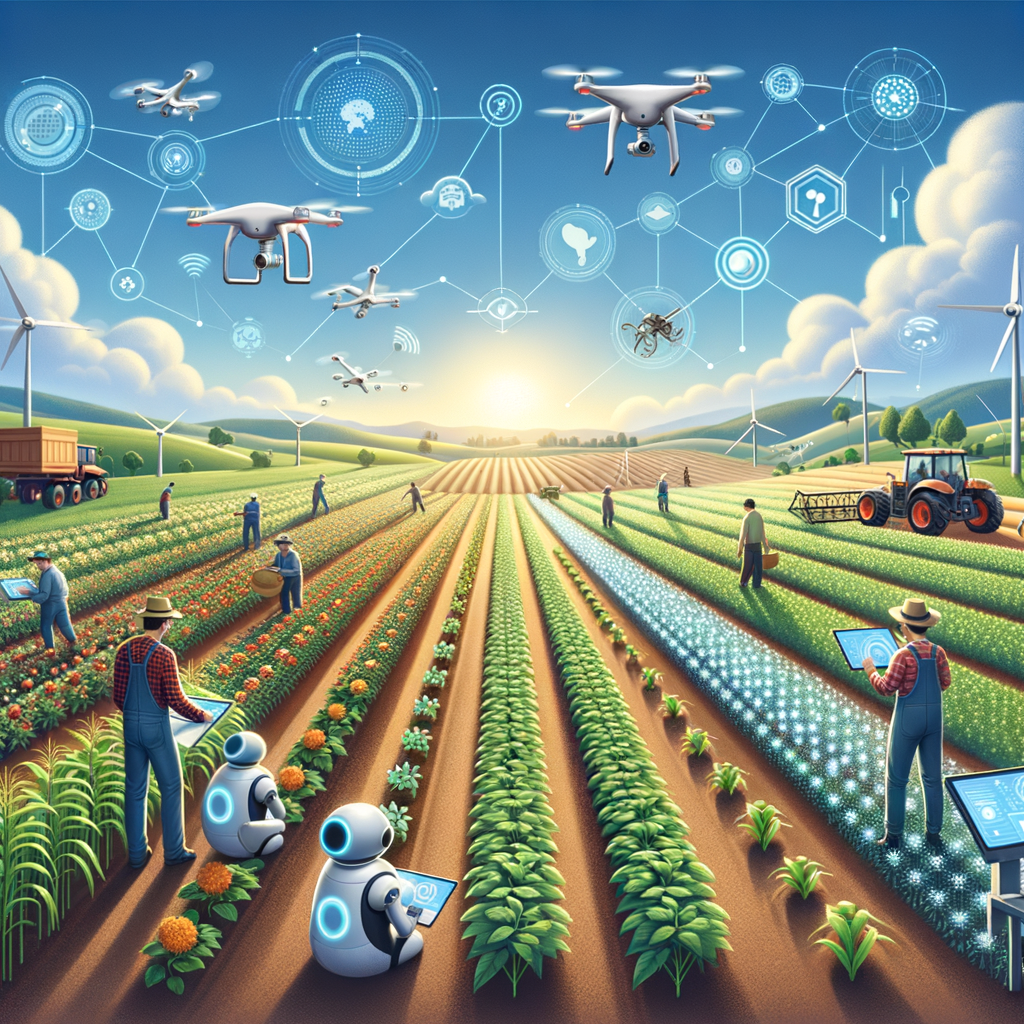Did you know that the global AI in agriculture market is projected to reach $8.4 billion by 2030? I’m amazed by how artificial intelligence is revolutionizing the way we grow food! From autonomous tractors roaming fields to AI-powered crop monitoring systems, smart farming is no longer science fiction – it’s transforming agriculture right before our eyes.
Understanding AI’s Role in Modern Agriculture
Just like how smartphones have revolutionized our daily lives, artificial intelligence is transforming the agricultural landscape in remarkable ways. Modern farming has evolved far beyond traditional methods, with AI systems now serving as invaluable tools for farmers worldwide. For instance, a small family farm in Iowa might now use AI-powered systems to make decisions that their grandparents would have made based on gut instinct alone.
Definition of AI in Agricultural Context
In farming, AI acts like a highly sophisticated farm hand that never sleeps, constantly analyzing data and making predictions. This digital assistant helps farmers make smarter decisions about everything from when to plant to how much to water their crops.
Key Drivers Behind AI Adoption
The push toward AI adoption isn’t just about keeping up with technology – it’s about necessity. With a growing global population and increasingly unpredictable weather patterns, farmers are turning to AI to help meet these challenges head-on. Consider how a drought-stricken region in California might use AI to optimize water usage and maintain crop yields despite harsh conditions.
Current Market Size and Growth Projections
The agricultural AI market is experiencing explosive growth, much like the early days of the internet. What started as a niche technology has now become a multi-billion dollar industry, with projections showing even more dramatic expansion in the coming years.
Core Applications of AI in Farming
Precision Agriculture and Smart Farming
Imagine having a virtual agronomist watching over every square inch of your fields 24/7. That’s essentially what precision agriculture provides, using AI to monitor and optimize growing conditions at a microscopic level.
Crop Monitoring and Disease Detection
Just as doctors use advanced imaging to diagnose patients, AI systems use sophisticated sensors and cameras to spot plant diseases before they become visible to the human eye. This early detection can mean the difference between saving or losing an entire crop.
Smart Farming Technologies
Agricultural Robots and Autonomous Systems
From autonomous tractors to robotic harvesters, these machines are becoming as common on modern farms as tractors were in the 20th century. They work tirelessly, performing tasks with incredible precision and consistency.
Drone Technology and Aerial Imaging
Think of agricultural drones as the farmer’s eye in the sky. They provide detailed aerial views of crops, helping identify issues that might be missed from ground level, much like how satellite imagery revolutionized weather forecasting.
IoT Sensors and Data Collection
Much like a Fitbit tracks human health metrics, IoT sensors monitor vital signs of crops and soil. These devices create a constant stream of data that helps farmers make informed decisions about their operations.
Benefits and Impact
Increased Crop Yields and Productivity
By implementing AI-driven solutions, farms are seeing yields increase dramatically. It’s similar to how manufacturing productivity soared with the introduction of assembly lines, but now it’s happening in our fields.
Resource Optimization and Sustainability
With AI’s help, farmers are using less water, fewer pesticides, and reducing waste. This precision approach is like having a master chef who knows exactly how much of each ingredient to use – no more, no less.
Implementation Challenges
Technical Barriers and Infrastructure Needs
Many rural areas still struggle with the same issue that early internet users faced – connectivity. Without reliable internet and power infrastructure, even the most advanced AI systems can’t function effectively.
Training and Workforce Adaptation
Just as the industrial revolution required workers to learn new skills, the AI revolution in agriculture demands that farmers become tech-savvy. This transition can be particularly challenging for older generations of farmers who’ve spent decades doing things differently.
Conclusion
The integration of AI in agriculture represents a pivotal shift in how we approach farming. As we’ve explored, from precision agriculture to autonomous systems, AI is helping create more efficient, sustainable, and productive farming practices. Ready to embrace the future of farming? The time to adapt these revolutionary technologies is now!

